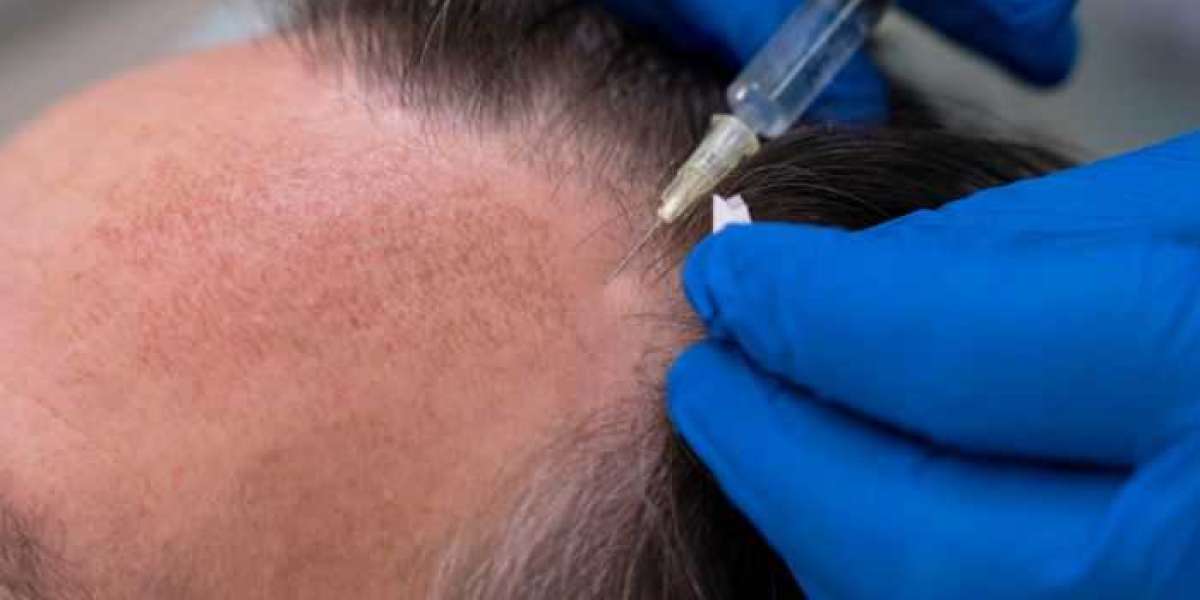Losing your hair doesn’t just change your look — it can affect your confidence and impact how you feel inside. Whether due to age, heredity, or health conditions, thinning hair or baldness often leads people to seek solutions that restore not only hair but also confidence. While surgical hair restoration has long been a well-known option, today’s advancements offer highly effective non surgical hair restoration techniques.
Among these are Scalp Micropigmentation (SMP) and Smart PRP (Platelet-Rich Plasma) therapy—innovative approaches that support hair density and regrowth without the need for incisions or lengthy recovery periods. This article explores how these treatments function and how they can improve the +impression and texture of your hair.
What Is Non-Surgical Hair Restoration?
Non surgical hair restoration refers to cosmetic or biological procedures designed to treat hair thinning or loss without requiring surgery. Unlike hair transplants, which involve the physical relocation of hair follicles, non-surgical methods focus on stimulating the body's regenerative processes or enhancing the appearance of the scalp.
Common non-surgical options include:
- Scalp Micropigmentation (SMP) for visual density.
- Smart PRP therapy to boost natural hair growth.
These therapies can be customized to suit various types of hair loss and at different stages of progression.
Scalp Micropigmentation (SMP)
SMP is a non-invasive treatment that uses pigment implantation to simulate the look of hair follicles. The procedure involves carefully placing tiny dots of pigment on the scalp using microneedles to create the illusion of denser hair or a closely-shaved style.
Who Can Benefit:
- Individuals with diffuse thinning.
- People with alopecia or bald patches.
- Those who prefer a shaved-head look with clear hairline definition.
Advantages of SMP:
- Instant results—visible improvement after a few sessions.
- Low maintenance—requires minimal aftercare.
- Customizable to match skin tone and hair colour.
- No surgery or downtime is involved.
SMP is especially beneficial for individuals seeking a fast, reliable way to improve the appearance of their scalp without waiting for hair to regrow.
Smart PRP Therapy
An enhanced form of traditional PRP, Smart PRP therapy utilizes a refined process to concentrate growth factors more effectively, making it a highly efficient non-surgical method for hair restoration. This advanced treatment leverages your body's natural platelets, which are rich in proteins that stimulate tissue repair and hair follicle activity.
How Smart PRP Works:
- A small blood sample is taken.
- Advanced centrifuge technology is used to extract and concentrate platelets with higher accuracy.
- The Smart PRP solution is injected into targeted areas of the scalp.
By activating dormant or weakened follicles, Smart PRP supports healthier, thicker hair regrowth.
Who It’s For:
- People are in the early to moderate stages of hair thinning.
- Individuals seeking a natural, drug-free treatment option.
- Patients looking to maintain existing hair density.
Benefits of Smart PRP:
- Enhanced growth factor concentration compared to traditional PRP.
- Natural results using the body’s healing capabilities.
- Minimal recovery time—patients resume normal activities quickly.
- Long-term improvement with continued sessions.
- Lower risk of allergic reaction or complications.
Smart PRP therapy is typically performed in just one quick session every 8 to 12 months, keeping your results fresh and lasting. Many patients report visible improvements within several months of starting treatment.
What to Expect During Treatment
Choosing non surgical hair restoration involves an initial consultation, during which a specialist evaluates your scalp condition, hair density, and overall health history. Based on this assessment, they may recommend either SMP, Smart PRP, or both.
Both procedures are performed on an outpatient basis and involve minimal discomfort. Smart PRP may cause slight scalp sensitivity for a day or two, while SMP patients may need to avoid certain products or direct sun exposure temporarily after each session.
Conclusion
Non surgical hair restoration provides a safe and customizable path for individuals dealing with hair loss. Whether through the visual impact of Scalp Micropigmentation or the regenerative boost from Smart PRP therapy, these methods offer effective, low-risk alternatives to surgical transplants.
As technology and technique continue to evolve, treatments like Smart PRP are raising the standard for natural hair restoration—helping more people regain not only their hair but also their confidence and self-assurance.







